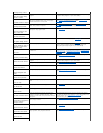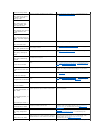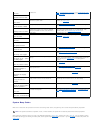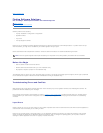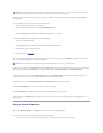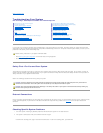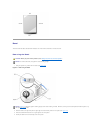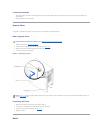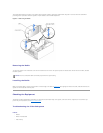
YoucanrunthesystemdiagnosticsfromeithertheutilitypartitiononyourharddriveorfromasetofdiskettesthatyoucreatefromtheDell OpenManage
Server AssistantCD.
To run the diagnostics from the utility partition, perform the following steps:
1. Start the utility partition by pressing <F10> during POST.
2. From the utility partition's main menu, select the Run System Diagnostics option.
See the Dell OpenManage Server AssistantCDforadditionalinformationabouttheutilitypartition.
To run the system diagnostics from the diskettes, perform the following steps:
1. Create a set of diagnostics diskettes.
See the Dell OpenManage Server AssistantCDforinformationoncreatingdiagnosticsdiskettes.
2. Boot the system from the first diagnostics diskette.
If the system fails to boot, see "Getting Help."
When you start the system diagnostics, a message is displayed telling you that the diagnostics is loading. The Diagnostics menu appears. The menu allows
you to run all or specific diagnostic tests or to exit system diagnostics.
For a quick test of the system, select Test All Devices and then select Quick Tests. This option runs only the device tests that do not require user interaction
and that do not take a long time to run. Dell recommends that you choose this option first to increase the chance of tracing the source of the problem quickly.
To test a particular device, select Test One Device. For a complete test of the system, select Test All Devices and then select Extended Tests.
To test a particular area of the system, choose Advanced Testing. When you select Advanced Testing, the main screen of the diagnostics appears. This
screen includes a listing of the various device groups in the system and the system's service tag number.
To view data on test results, select Information and Results. Select Program Options to set various test parameters.
By selecting Device Configuration, you can see an overview of the devices in the system.
Selecting Exit to MS-DOS exits the diagnostics and returns you to the MS-DOS®operating system environment.
To select an option from the Diagnostics menu, highlight the option and press <Enter>, or press the key that corresponds to the highlighted letter in the
option you choose.
Using the System Diagnostics
When you select Advanced Testing from the Diagnostics menu, the main screen of the diagnostics appears.
Information on the main screen of the diagnostics is presented in the following areas:
l Two lines at the top of the main screen identify the diagnostics, the version number, and the system's service tag number.
NOTICE: Use the system diagnostics to test only your system. Using this program with other systems may cause incorrect results or error messages.
Also, use only the program that came with your system or an updated version of the program for your system.
NOTE: Before you read the rest of this section, start the system diagnostics so that you can see it on your monitor screen.



